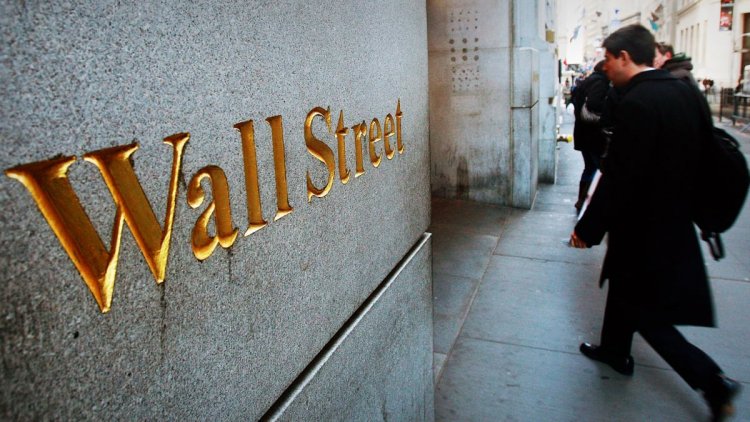Wall Street Analysts Sound Alarm On 2023 Stock Rally As 10-Year Yields Test 4%, Earnings Underwhelm
With 10-year yields testing 4%, and earnings likely headed into recession, the S&P 500 is under extended pressure this week as the Fed continues is hawkish rate signaling.

With 10-year yields testing 4%, and earnings likely headed into recession, the S&P 500 is under extended pressure this week as the Fed continues is hawkish rate signaling.
Updated at 11:23 am EST
Wall Street's biggest banks are running out of reasons to feel bullish this week as the Federal Reserve continues to signal higher interest rates, consumers continue to feel the sting of faster inflation and corporate profits look to deliver the first earnings recession in two years.
A chorus of hawkish Fed policymakers last week, alongside better-than-expected readings for retail sales and weekly jobless claims, sparked a big move higher in both Treasury bond yields and rate expectations, with traders now pricing in at least a 20% chance of a 50 basis point rate hike at the central bank's next meeting in March.
The CME Group's FedWatch is also pricing in at least a 57.6% chance that the Fed Funds rate will rise to between 5.25% and 5.5% by mid June, compared to just 3.2% a month ago.
The moves have taken benchmark 10-year notes to around 3.941%, the highest since early November, while pegging 2-year notes at 4.712%, marking a 31 basis point surge since the beginning of the year.
That's added extra weight to stocks, with the S&P 500 down 2.4% from its early February peak -- and sliding into negative territory for the month -- as investors judge the impact of both higher Fed rates and a muted fourth quarter earnings season.
Collective S&P 500 profits, in fact, are set to decline by around 2.8% from last year's levels to a share-weighted $443.2 billion, according to Refinitiv data, with first quarter earnings likely to decline another 3.9%.
Ten of the benchmark's 11 sectors have seen downwards earnings revisions since November, when the current rally began to gain traction, with around two-thirds of companies topping Street forecasts, well south of the prior four-quarter average of around 76%.
"The S&P 500 is coming off its first two-week losing streak of the year as traders and investors continue to take the pulse of inflation—and how it could influence the Federal Reserve’s stance on interest rates," said Chris Larkin, managing director for trading at E*TRADE from Morgan Stanley.
"And with a stacked earnings schedule, bulls will be hoping to see a break from the typical post-President’s Day trading slog—the shortened week is historically weaker, but less volatile, than the market’s typical four-day performance."
With earnings season winding down, and the Fed not set for another policy meeting until late March, minutes of the central bank's February rate decision will likely provide the week's most important data as investors look for confirmation of its recent hawkish tenor.
Wednesday's Fed minutes, expected at 2:00 pm Eastern time, will be followed on Friday by the January reading of the central bank's preferred inflation target, the PCE Price index, which is expected to echo the level of elevated price pressures detailed in the January CPI report.
However, investors looking for a boost from the long-supportive U.S. consumer are likely to be disappointed this week, as well, as Walmart (WMT) - Get Free Report noted that higher-income customers made up the bulk of its fourth quarter sales gains as they traded-down on food and other staples amid the fastest inflation rates in decades.
Home Depot (HD) - Get Free Report, as well, said 2023 sales would likely remain flat to last year's levels, with profits likely falling by 'mid-single digits', as consumer spending retreats in a cooling home improvement market.
Morgan Stanley analyst Michael Wilson warned in a weekend client note that while the U.S. economy is likely to avoid recession, the chances of a so-called Fed pivot on interest rates has evaporated, raising the risk of a sharp equity market pullback that could drag the S&P 500 near the 3,000 point level by the middle of this year.
That view was echoed -- at least in part -- by JPMorgan's Mislav Matejka, who cautioned that stocks may have already reached their peak levels for the year.
"Historically, equities do not typically bottom before the Fed is advanced with cutting, and we never saw a low before the Fed has even stopped hiking," Matejka wrote.
Market volatility gauges are reacting in kind, as well, with the CBOE's VIX index surging 5.6% in the Tuesday session to 22.41 points, a level that suggests traders are expecting daily moves of around 57 points -- or 1.4% -- for the S&P 500 over the next thirty days.
Carol Schleif, the chief investment officer at BMO Family Office in Minneapolis, sees things differently, noting that while investors view recent growth and inflation data through the lens of the Fed, they miss the point that the economy is strong enough to bear the weight of higher interest rates.
"Even with the Federal Reserve's multiple interest rate hikes over the past year, the economy and the labor market are holding up exceptionally well, which supports our view that a soft landing is not only possible, but probable," she said. "Stock market returns in 2023 are likely to be much better than they were in 2022 and more like historical averages."
What's Your Reaction?



























































